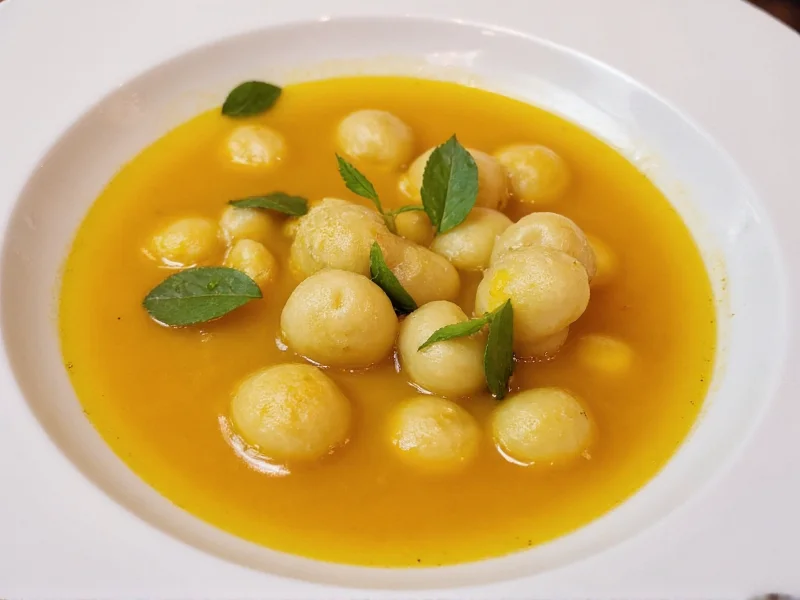The Heartwarming Tradition of Gnocchi Soup
Gnocchi soup represents a beautiful fusion of Italian culinary tradition and practical home cooking. Originating from Northern Italy where potato-based dumplings were developed as a way to stretch limited grain supplies, this soup has evolved into a beloved comfort food worldwide. Unlike standalone gnocchi dishes served with sauce, the soup version transforms these delicate dumplings into the centerpiece of a complete, nourishing meal. The dish's popularity has grown significantly in recent years as home cooks seek approachable yet sophisticated weeknight dinner options that deliver restaurant-quality satisfaction.
Understanding Gnocchi Varieties for Soup
Not all gnocchi perform equally well in soup applications. Understanding your options ensures optimal texture and flavor integration:
| Gnocchi Type | Best For Soup? | Preparation Notes |
|---|---|---|
| Potato gnocchi (shelf-stable) | Good | Requires brief cooking; slightly denser texture holds up well |
| Fresh refrigerated gnocchi | Excellent | Cooks in 2-3 minutes; superior delicate texture |
| Homemade potato gnocchi | Best | Handle gently; add last to prevent disintegration |
| Semolina gnocchi | Fair | More robust but less traditional flavor profile |
Building Flavor Foundations
The broth makes or breaks your gnocchi soup experience. While store-bought broths offer convenience, elevating them with simple techniques creates restaurant-quality results. Start by sautéing aromatic vegetables—onions, carrots, and celery—in olive oil until translucent but not browned. Add garlic and herbs like rosemary or thyme during the last minute of cooking to release their essential oils. For vegetarian versions, incorporate dried mushrooms or tomato paste to develop umami depth. When using chicken broth, consider reducing it slightly before adding gnocchi to concentrate flavors without overwhelming the delicate dumplings.
Perfecting Your Gnocchi Soup Technique
Mastering gnocchi soup requires attention to timing and technique. The critical mistake many home cooks make is boiling gnocchi directly in the soup, causing them to absorb too much liquid and disintegrate. Instead, cook gnocchi separately in salted water until they float (about 2-3 minutes for fresh varieties), then gently fold them into the finished soup just before serving. If incorporating directly, add gnocchi during the final minutes of cooking and avoid vigorous boiling. For creamy variations, temper cold cream with hot broth before adding to prevent curdling. The ideal consistency should coat the back of a spoon without being overly thick.
Seasonal Adaptations and Dietary Considerations
One of gnocchi soup's greatest strengths is its adaptability across seasons and dietary needs. During colder months, incorporate hearty root vegetables and a splash of red wine for depth. Spring versions shine with fresh peas, asparagus, and light lemon notes. For gluten-free adaptations, verify your gnocchi is made without wheat flour—most potato varieties naturally comply. Vegetarian versions work beautifully with mushroom broth and nutritional yeast instead of parmesan. When preparing for dairy restrictions, omit cheese or use vegan alternatives that melt smoothly. Each variation maintains the soul of the dish while accommodating different preferences without compromising on flavor complexity.
Troubleshooting Common Gnocchi Soup Issues
Even experienced cooks encounter challenges with gnocchi soup. When gnocchi disintegrates, it's typically due to overcooking or excessive stirring—add them at the very end and handle gently. If your broth becomes too thick, gradually incorporate additional warm broth rather than water to maintain flavor integrity. For lackluster flavor, consider adding a Parmesan rind during simmering or finishing with lemon zest to brighten the profile. When soup sits too long, gnocchi will continue absorbing liquid; remedy this by preparing components separately and combining just before serving. These troubleshooting techniques transform potential kitchen disasters into culinary triumphs.
Serving and Storage Recommendations
Gnocchi soup performs best when served immediately after preparation. Ladle into pre-warmed bowls and finish with freshly grated parmesan, a drizzle of quality olive oil, and cracked black pepper. For optimal texture, avoid storing complete soup—instead, keep broth and cooked gnocchi separate, combining only when ready to serve. Properly stored components maintain quality for 3-4 days in the refrigerator. When reheating, gently warm the broth first, then add gnocchi to prevent mushiness. Freezing complete gnocchi soup isn't recommended as the dumplings lose their delicate texture, though the broth component freezes beautifully for future use.











 浙公网安备
33010002000092号
浙公网安备
33010002000092号 浙B2-20120091-4
浙B2-20120091-4